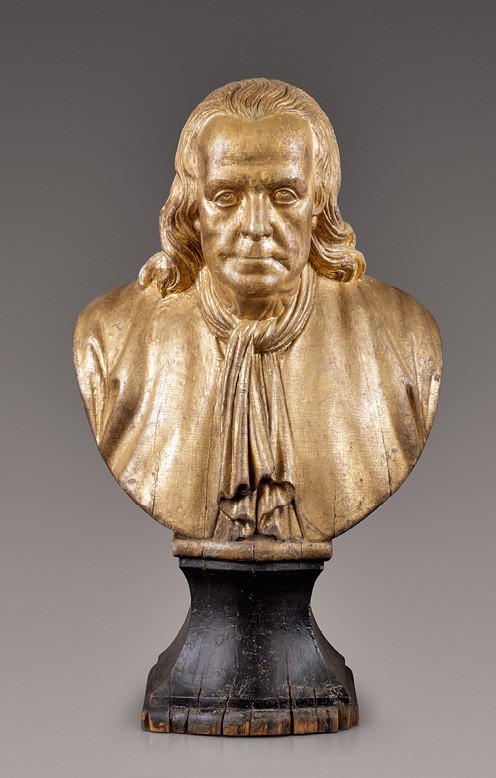
Bust of Benjamin Franklin, attributed to Martin Jugiez, Philadelphia, Pennsylvania, 1779–1790. White pine; iron. H. 35". (Chipstone Foundation; photo, Gavin Ashworth.)
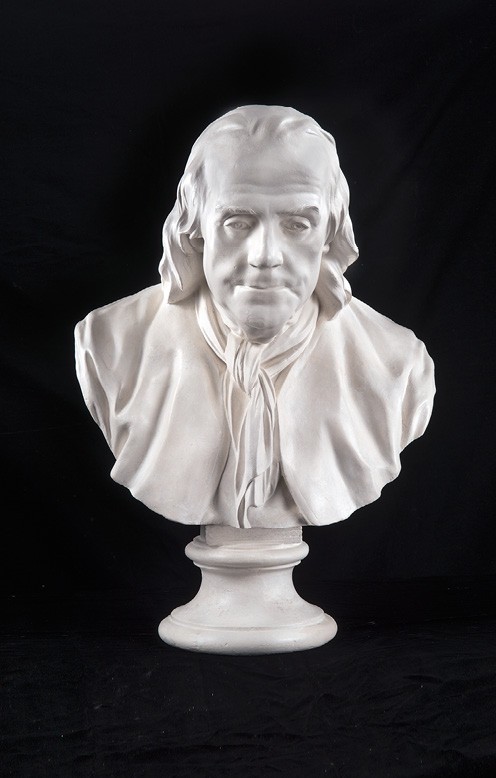
Jean Jacques Cafferi, Benjamin Franklin, Paris, France, 1779–1805. Plaster. H. 28". (Courtesy, The New York Historical.)
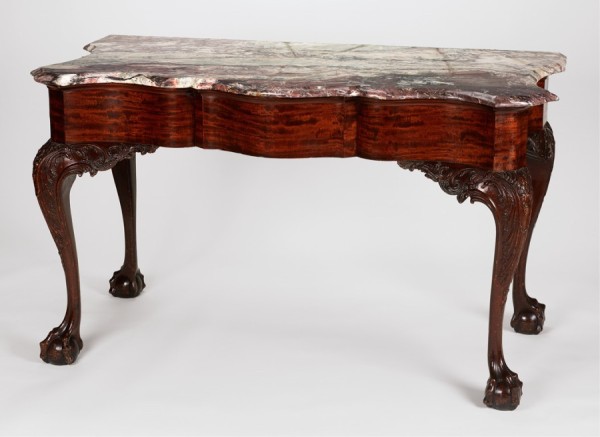
Pier table with carving attributed to Hercules Courtenay, Philadelphia, Pennsylvania, ca. 1770. H. 32", W. 54", D. 27". (Courtesy, Rhode Island School of Design, bequest of Charles Pendleton.)
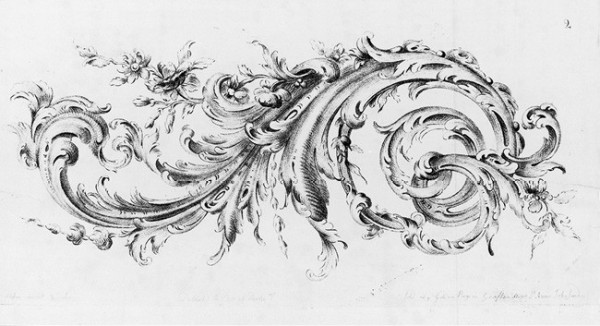
Design for a chimneypiece frieze -illustrated on plate 12 in Thomas Johnson’s A New Book of Ornaments, by Thos. Johnson Carver, Design’d for Tables & Friezes; Useful for Youth to Draw After (London, 1762). (Courtesy, © Victoria & Albert Museum.)
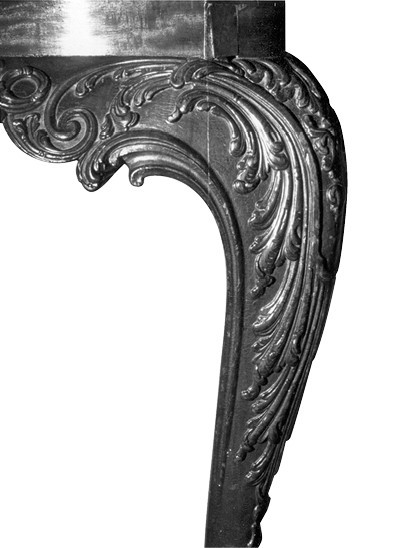
Detail of the knee carving on the table illustrated in fig. 3
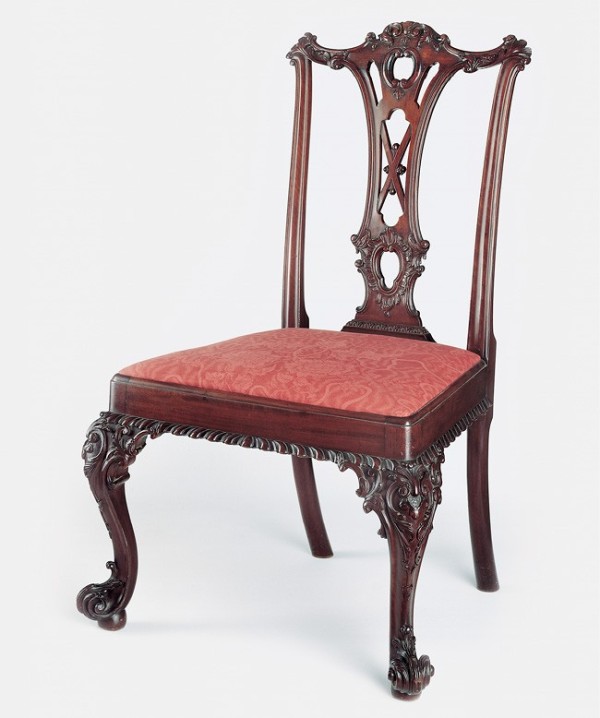
Side chair with carving attributed to Martin Jugiez, Philadelphia, Pennsylvania, ca. 1765. Mahogany. H. 39", W. 25 1/2", D. 23 1/2". (Chipstone Foundation; photo, Gavin Ashworth.) This chair is from a set of at least six.
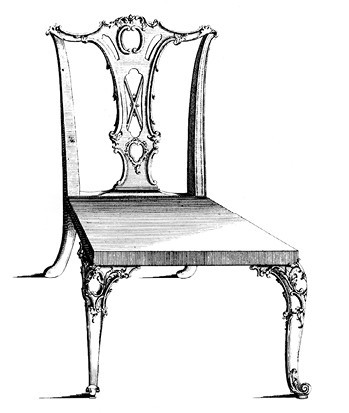
Design for a side chair shown on pl. 12 of the first and second editions of Thomas Chippendale’s The Gentleman and Cabinet-Maker’s Director (1754; 1755). (Courtesy, Winterthur Library.) This design appears on pl. 14 in the third edition (issued in loose sheets in 1762 and as a complete volume in 1763).
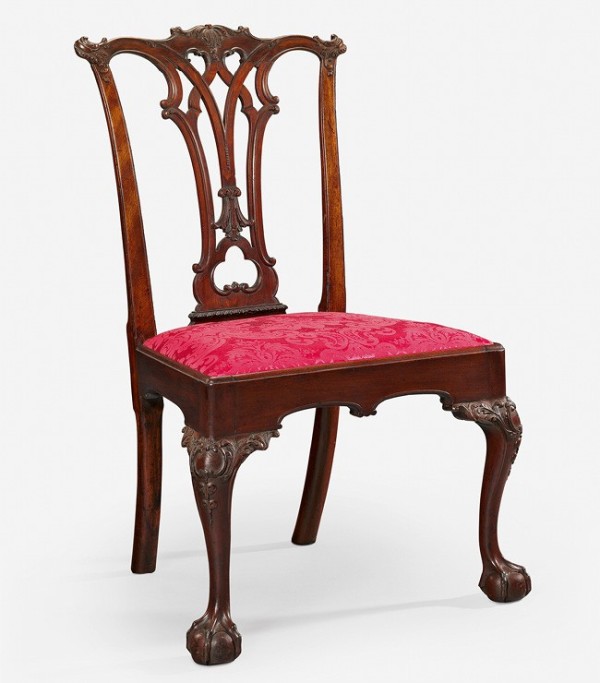
Side chair with carving attributed to John Pollard, Philadelphia, Pennsylvania, ca. 1769. Mahogany with white cedar and yellow pine. H. 37 1/2". (Private collection; photo, Christie’s.) This example, which has the period ink inscription “Deshler” on its slip-seat frame, is from a suite comprising at least six side chairs, two card tables, and an easy chair.
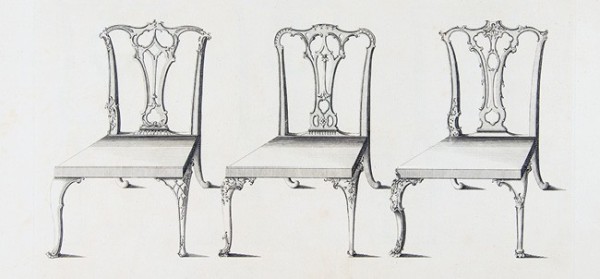
Designs for side chairs shown on pl. 13 in the first and second editions of Thomas Chippendale’s The Gentleman and Cabinet-Maker’s Director (1754; 1755). (Courtesy, Winterthur Library.) This design appears on pl. 10 in the third edition (issued in loose sheets in 1762 and as a complete volume in 1763).
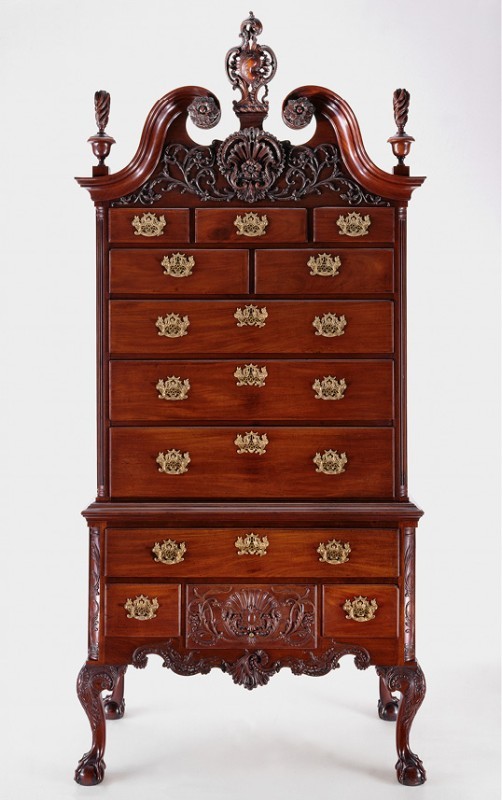
High chest of drawers, Philadelphia, Pennsylvania, 1750–1760. Mahogany with white cedar and tulip poplar. H. 102 1/2", W. 46 1/8", D. 21 3/4". (Courtesy, Winterthur Museum.)
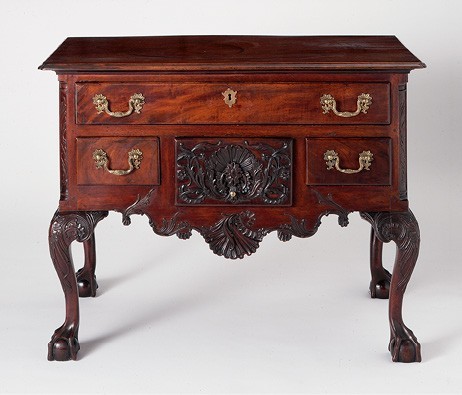
Dressing table, Philadelphia, Pennsylvania, 1765–1775. Mahogany with white cedar and tulip poplar. H. 28 3/8", W. 37", D. 18 3/4". (Courtesy, Winterthur Museum.)

Details showing the carving on the lower center drawer in the base of the high chest illustrated in fig. 10 (left) and in the dressing table illustrated in fig. 11 (right). (Photo, Gavin Ashworth.)
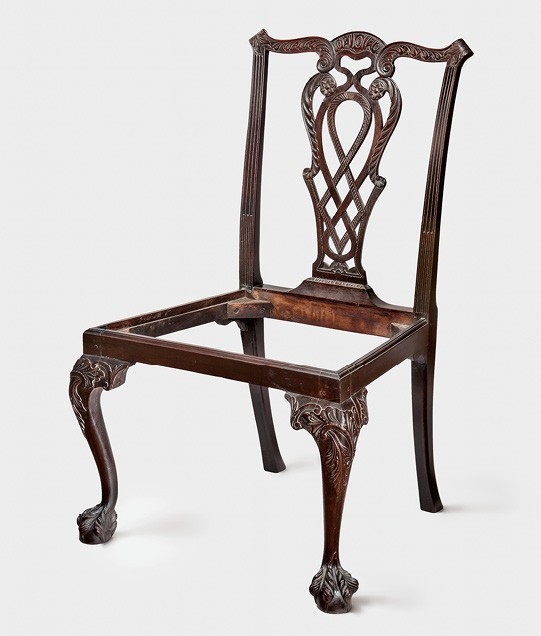
Side chair, Boston, Massachusetts, ca. 1765. Mahogany with maple and oak. H. 38 1/4", W. 25 1/2", D. 18 1/4". (Courtesy, Wadsworth Atheneum; photo, Gavin Ashworth.)

Side chair, England, ca. 1765. Mahogany with beech. H. 37 1/4", W. 23 1/4", D. 19 1/4". (Courtesy, Museum of Fine Arts, Boston; gift of Mrs. Joshua Crane in memory of her husband.)
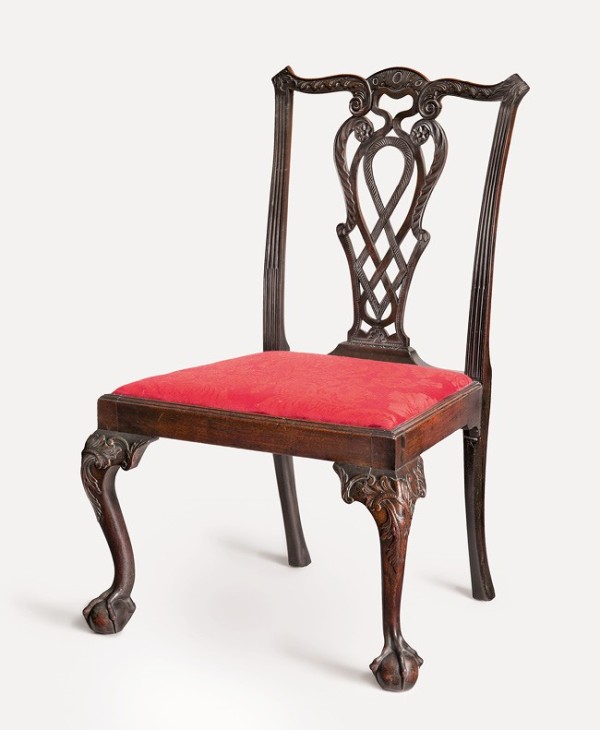
Side chair, Boston, Massachusetts, ca. 1765. Mahogany with maple. H. 37 7/8", W. 25", D. 22". (Chipstone Foundation; photo, Gavin Ashworth.)

Details showing the crests of chairs identical to the examples illustrated in fig. 15 (left) and fig. 14 (right).

Details showing the knee carving of the side chair illustrated in fig. 15 (left) and a chair identical to those in the Phillips set (fig. 14) (right).
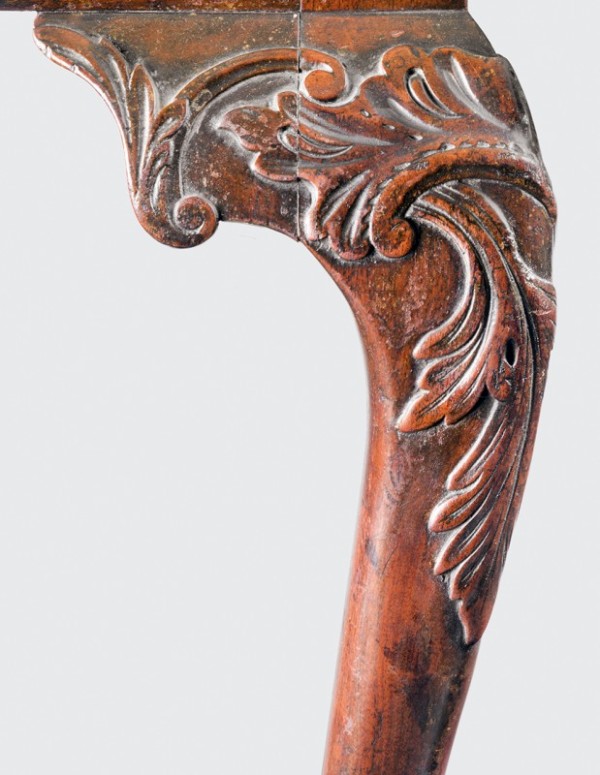
Detail showing the nail holes from pattern attachment on the side chair illustrated in fig. 15. (Photo, Gavin Ashworth.)

Carving pattern from the shop of Gideon Saint, London, ca. 1760. (Courtesy, Metropolitan Museum of Art; photo, Art Resource.)
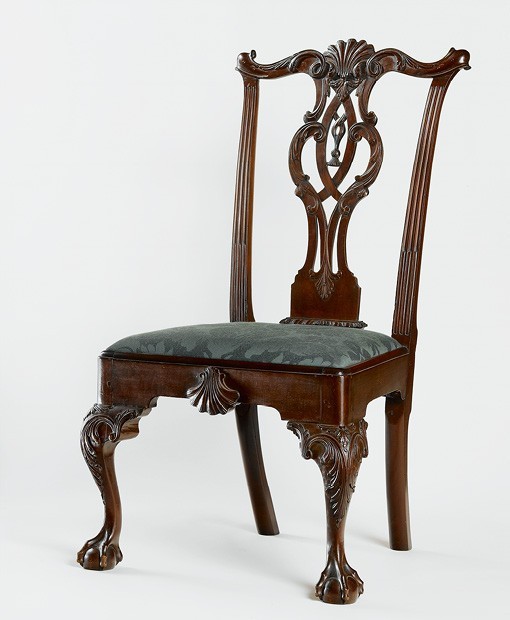
Side chair with carving attributed to Hercules Courtenay, Philadelphia, Pennsylvania, ca. 1770. Mahogany. H. 41 1/2", W. 21 1/2", D. 17". (Private collection; photo, Gavin Ashworth.)
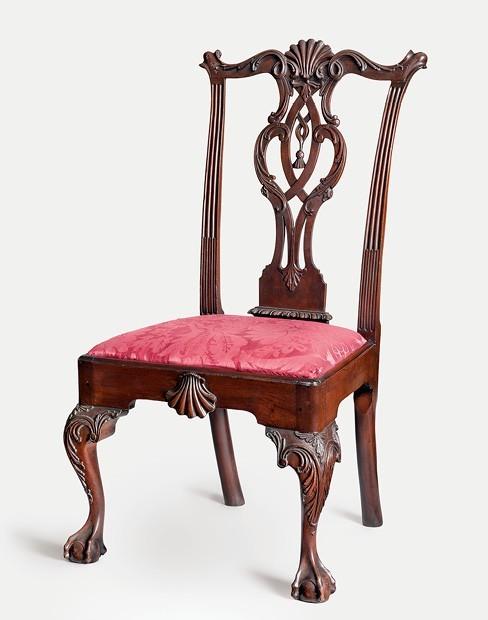
Side chair, Philadelphia, Pennsylvania, ca. 1770. Mahogany. H. 41 1/4", W. 23", D. 21 1/4". (Chipstone Foundation; photo, Gavin Ashworth.)
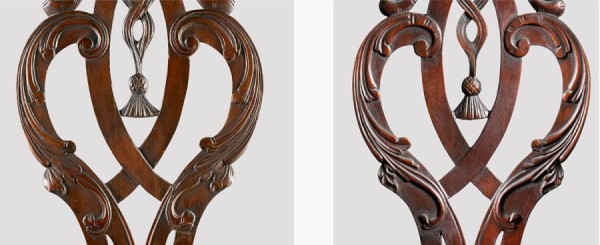
Details of the splats of the side chairs illustrated in figs. 20 (left) and 21 (right).(Photos, Gavin Ashworth.)
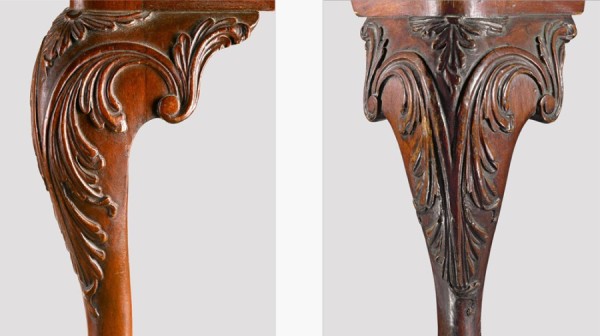
Details of the knee carving on the side chairs illustrated in figs. 20 (left) and 21 (right).(Photos, Gavin Ashworth.)
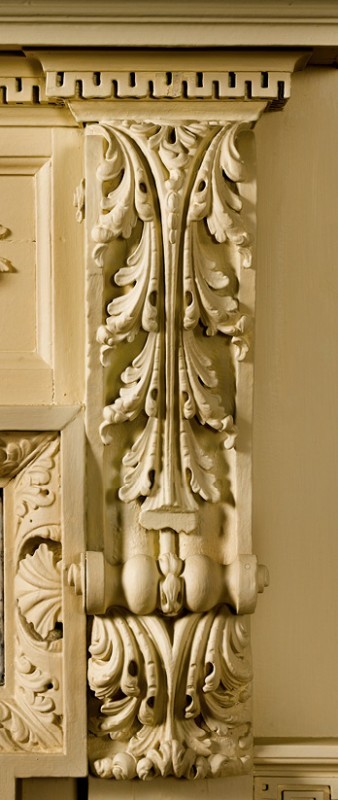
Detail of the right truss on the chimneypiece from the parlor of the Samuel Powel House, Philadelphia, 1770. (Courtesy, Philadelphia Museum of Art; photo, Gavin Ashworth.)
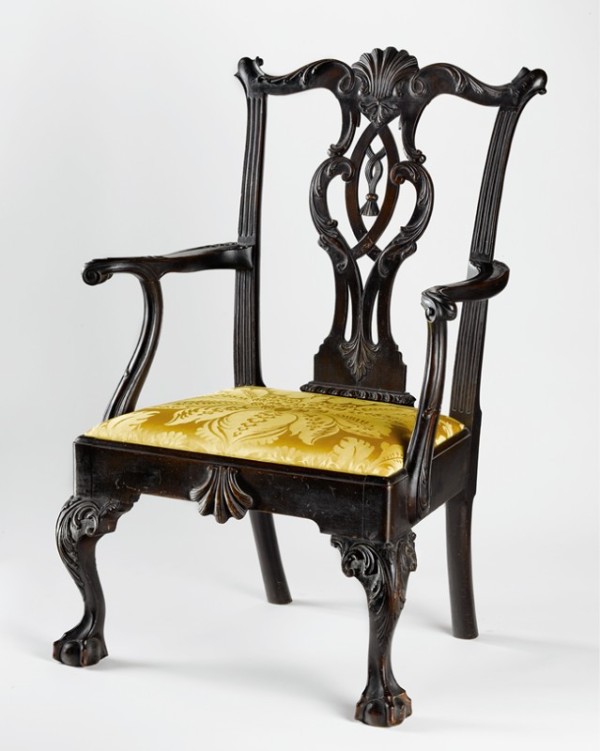
Armchair with carving attributed to Hercules Courtenay and an anonymous competitor, Philadelphia, Pennsylvania, ca. 1770. H. 40 1/4", W. 25 1/4", D. 21 3/4". (Private collection; photo, Gavin Ashworth.)
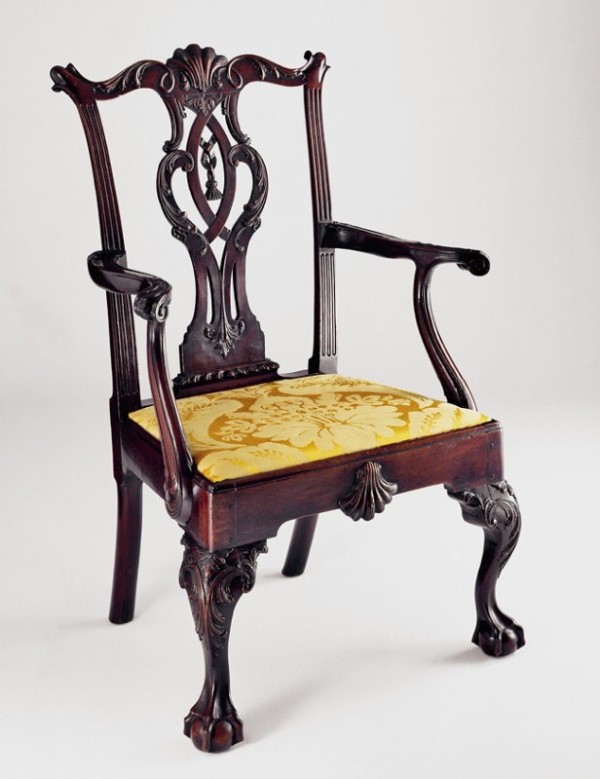
Armchair with carving attributed to Hercules Courtenay, Philadelphia, Pennsylvania, ca. 1770. H. 40 1/4", W. 25 1/2", D. 22". (Chipstone Foundation; photo, Gavin Ashworth.) The mate to this armchair is in the collection of the Philadelphia Museum of Art.
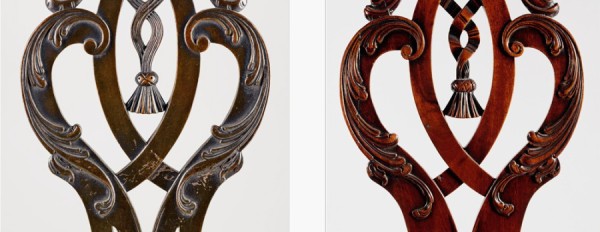
Details showing the backs of the arm-chairs illustrated in figs. 25 (left) and 26 (right). (Photos, Gavin Ashworth.)
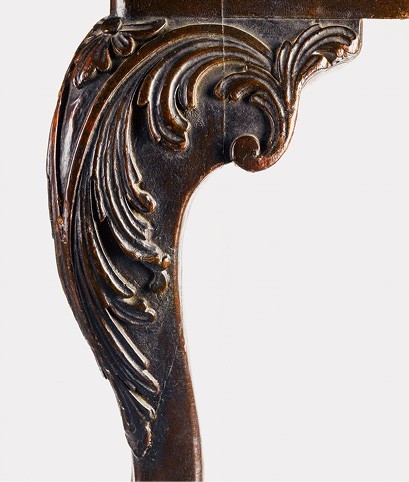
Details showing the knees of the arm-chairs illustrated in figs. 25 (left) and 26 (right). (Photos, Gavin Ashworth.)
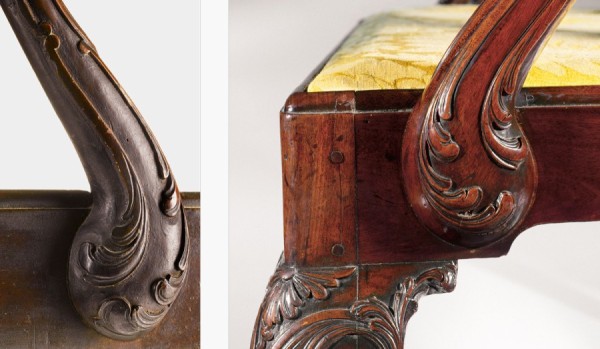
Details showing the arm supports of the armchairs illustrated in figs. 25 (left) and 26 (right). (Photos, Gavin Ashworth.)
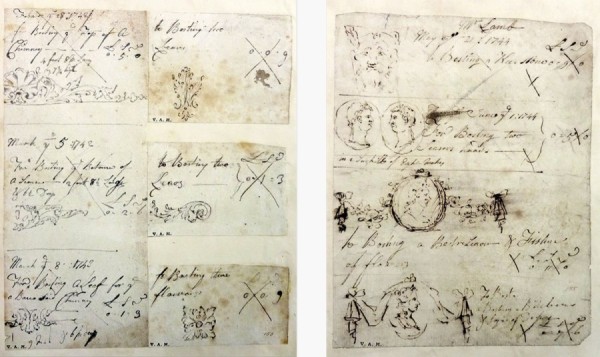
Accounts from the papers of Matthias Lock with drawings, notations, and charges for carving, London, 1742–1744. (Courtesy, © Victoria & Albert Museum.)
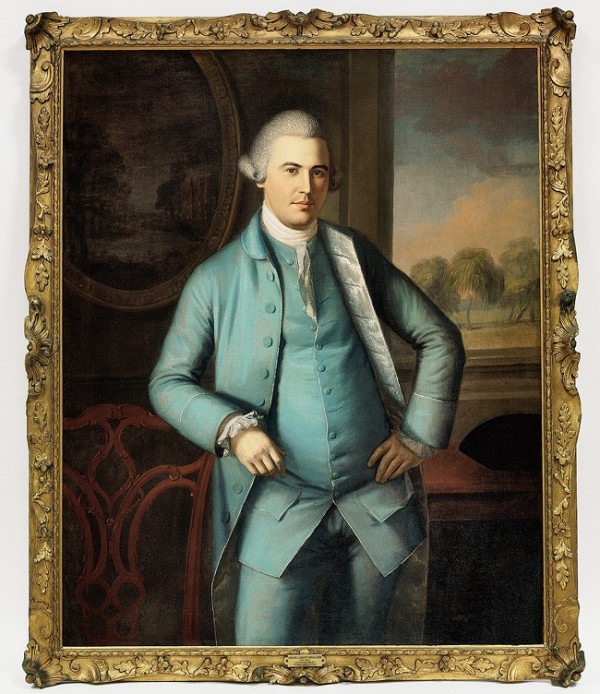
Charles Willson Peale, Lambert Cadwalader, 1770. Oil on canvas. 51" x 40 7/8". (Courtesy, Philadelphia Museum of Art.)
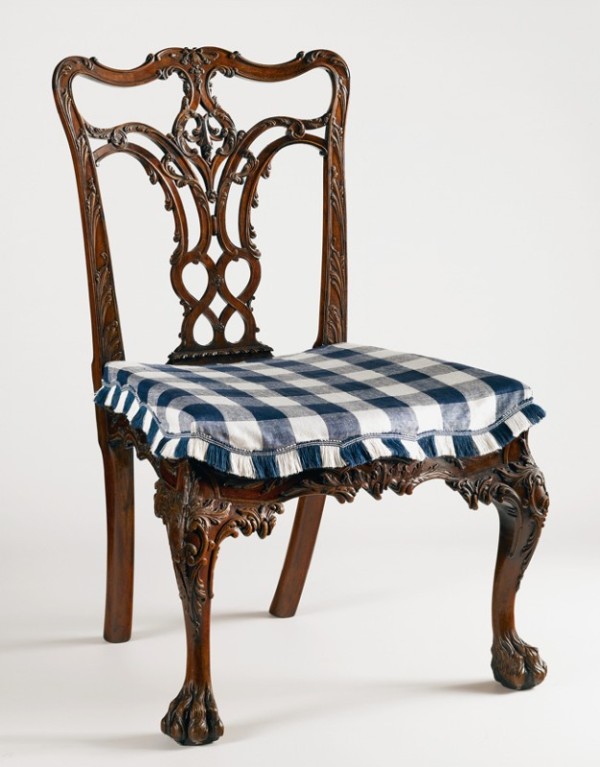
Side chair, Philadelphia, Pennsylvania, ca. 1769. Mahogany with white cedar. H. 36 3/4", W. 23", D. 21". (Chipstone Foundation; photo, Gavin Ashworth.)
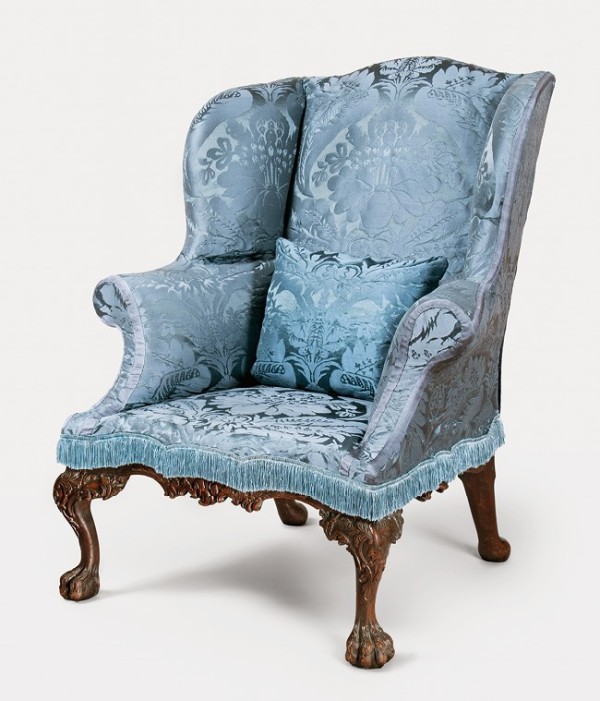
Easy chair attributed to the shop of Thomas Affleck with carving attributed to Bernard and Jugiez, Philadelphia, Pennsylvania, 1771. Mahogany with yellow pine, white oak, white cedar, black walnut, and tulip poplar. H. 46", W. 36 1/2", D. 34". (Courtesy, Philadelphia Museum of Art, 125th Anniversary Acquisition, gift of H. Richard Deitrich, Jr., 2001; photo, Gavin Ashworth.)
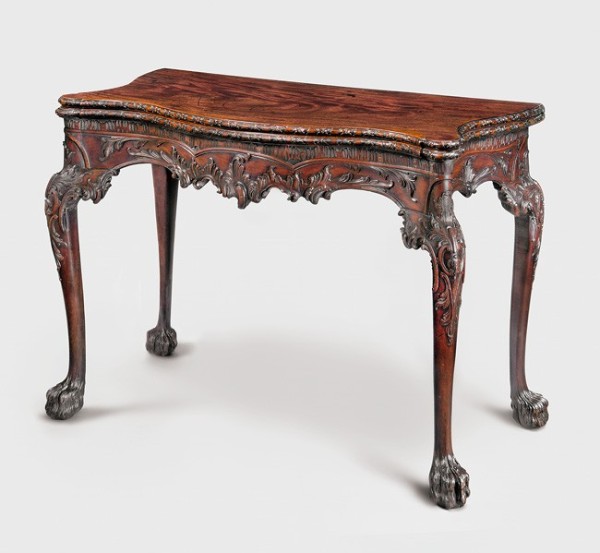
Card table attributed to the shop of Thomas Affleck with carving attributed to the shop of James Reynolds, Philadelphia, Pennsylvania, 1771. Mahogany with yellow pine, white oak, and tulip poplar. H. 28 3/4", W. 39 3/4", D. 19 3/4". (Courtesy, Dietrich American Foundation; photo, Gavin Ashworth.)
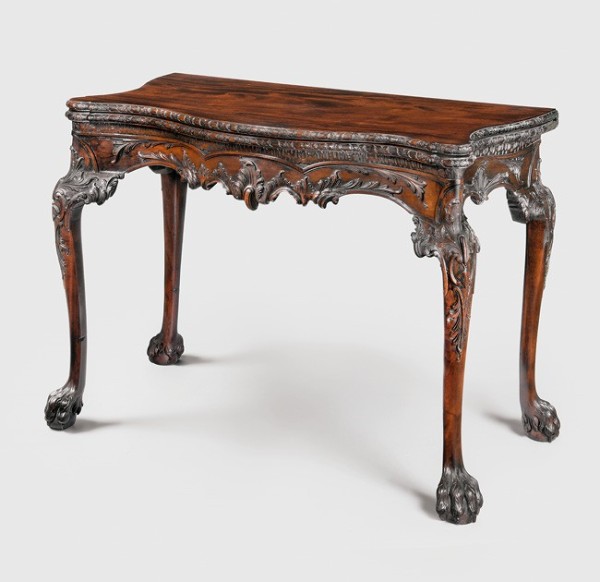
Card table attributed to the shop of Thomas Affleck with carving attributed to the shop of James Reynolds, Philadelphia, Pennsylvania, 1771. Mahogany with yellow pine, white oak, and tulip poplar. H. 28 1/2", W. 39 1/2", D. 19 3/4". (Courtesy, Philadelphia Museum of Art; photo, Gavin Ashworth.)
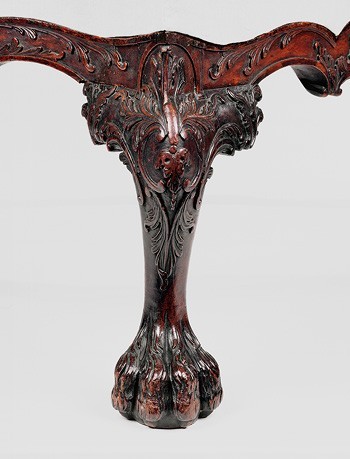
Detail of the carving on the leg of the easy chair illustrated in fig. 33.

Bernard and Jugiez, truss over a door in Cliveden, Philadelphia, Pennsylvania, 1766. (Courtesy, Cliveden; photo, Luke Beckerdite.)
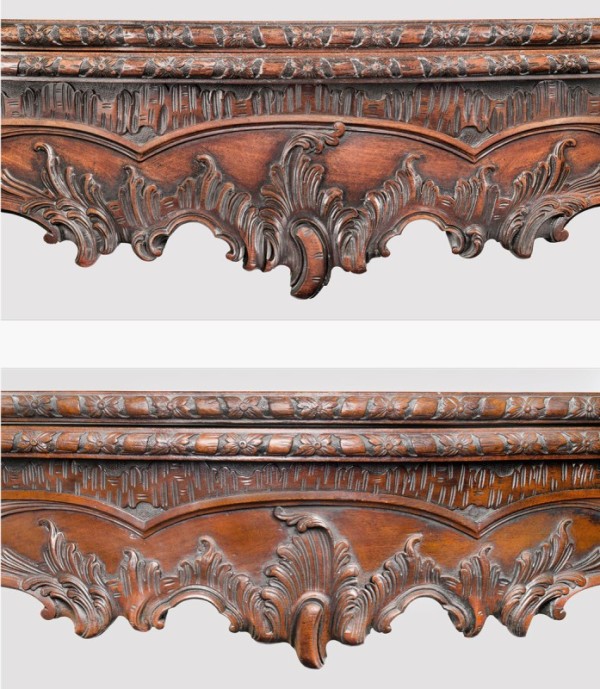
Details of the carving at the center of the front rail of the card table illustrated in fig. 34 (top) and fig. 35 (bottom). (Photos, Gavin Ashworth.)
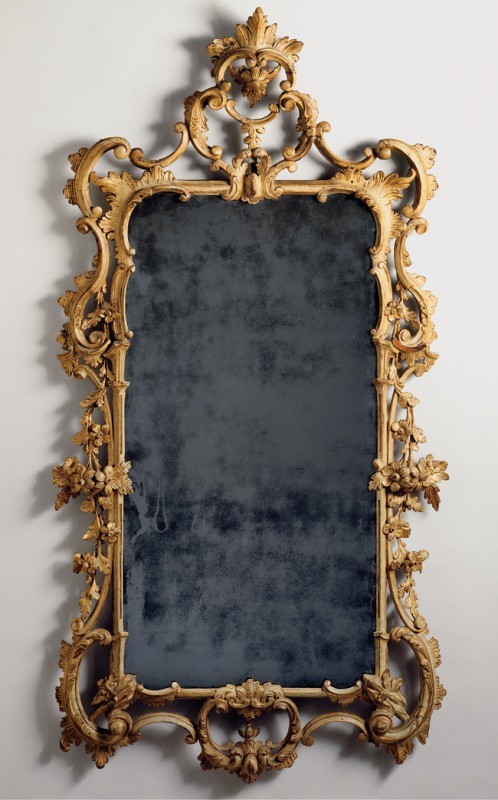
Pier glass attributed to the shop of James Reynolds, Philadelphia, Pennsylvania, 1771. White pine; gesso, gold leaf. 55 1/2" x 28 1/2". (Courtesy, Winterthur Museum.)
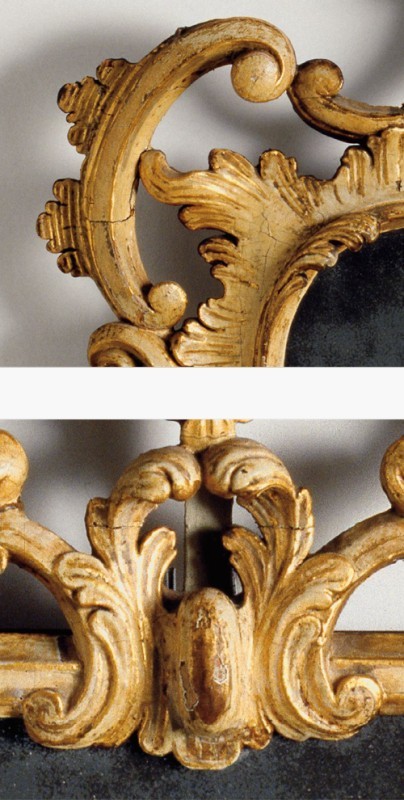
Details of the carving on the pier glass illustrated in (fig. 39).
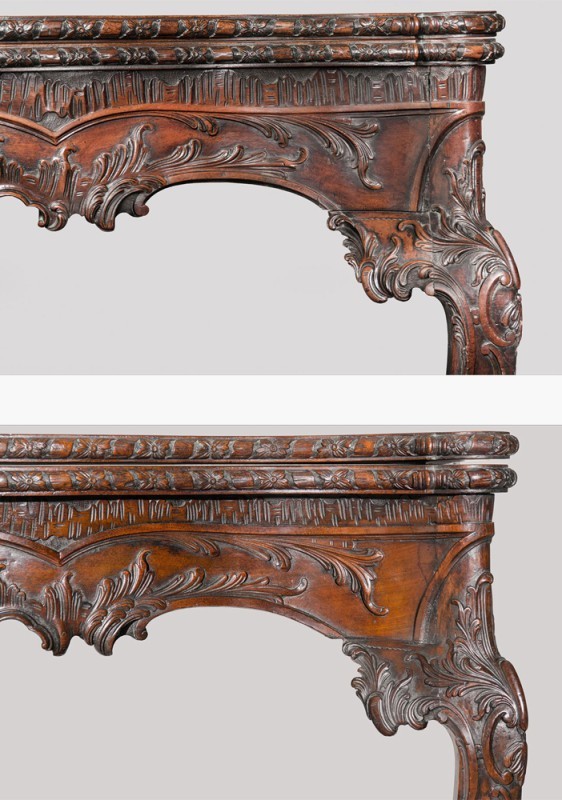
Details of the carving on the front rails of the card table illustrated in fig. 34 (top) and the card table illustrated in fig. 35 (bottom). (Photos, Gavin Ashworth.)
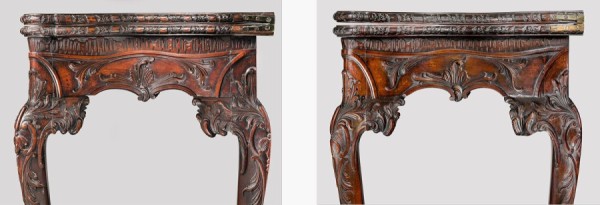
Details of the carving on the legs of the card table illustrated in fig. 34 (left) and the card table illustrated in fig. 35 (right). (Photos, Gavin Ashworth.)
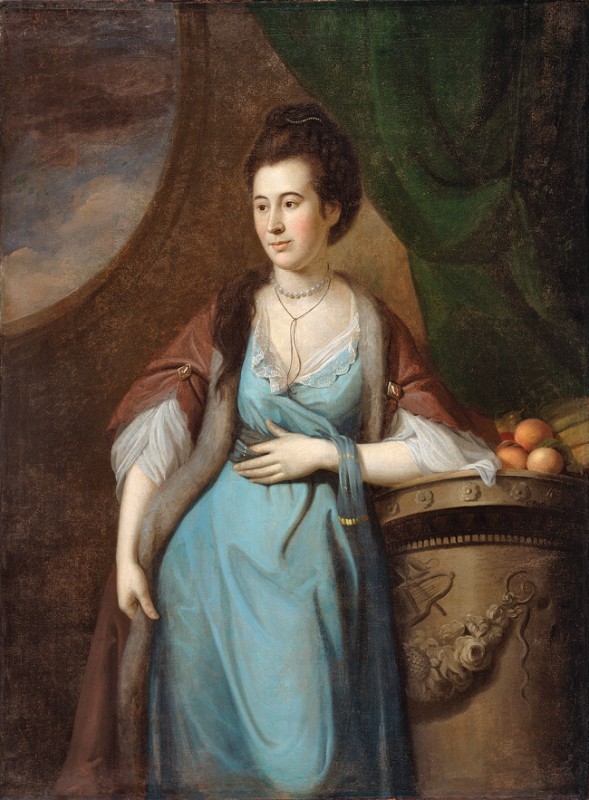
Charles Willson Peale, Martha Cadwalader, 1771. Oil on canvas. 50 3/4" x 37 9/16". (Courtesy, Philadelphia Museum of Art.)
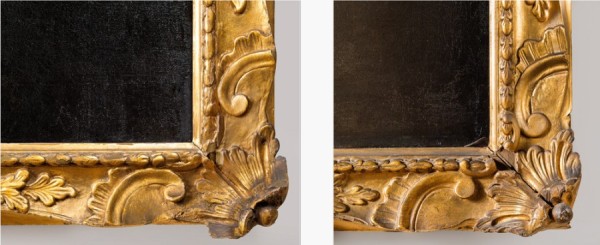
Details of the carving on the frames of Charles Willson Peale’s portraits of (right) Lambert Cadwalader and (left) Martha Cadwalader. (Photos, Gavin Ashworth.)
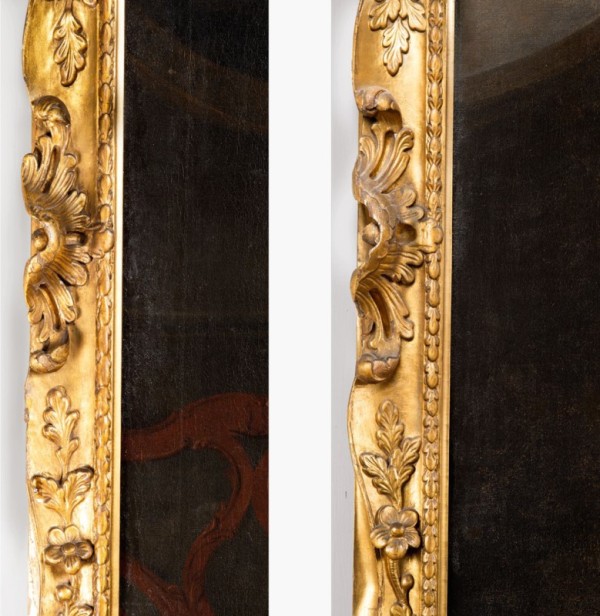
Details of the carving on the frames of Charles Willson Peale’s portraits of (right) Lambert Cadwalader and (left) Martha Cadwalader. (Photos, Gavin Ashworth.)
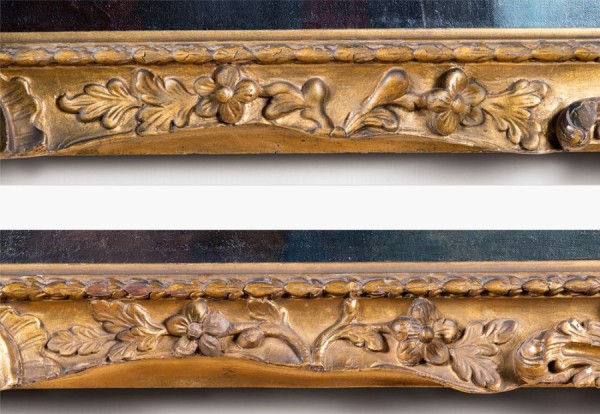
Details of the carving on the frames of Charles Willson Peale’s portraits of (top) Lambert Cadwalader and (bottom) Martha Cadwalader. (Photos, Gavin Ashworth.)
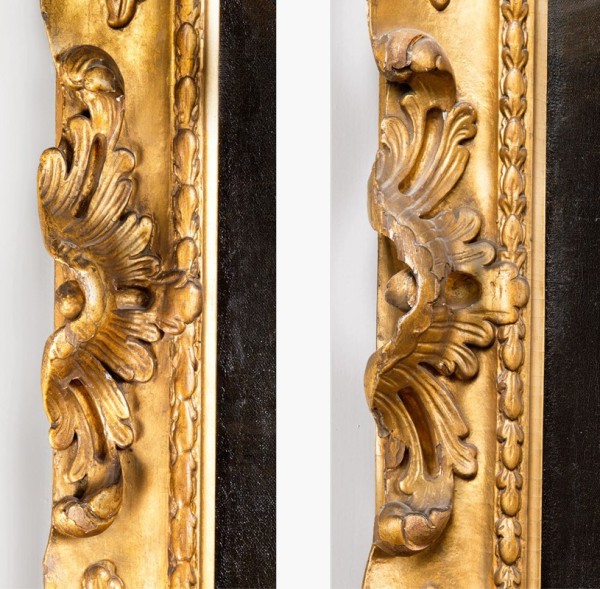
Details of the carving on the frames of Charles Willson Peale’s portraits of (left) Lambert Cadwalader and (right) Martha Cadwalader. (Photos, Gavin Ashworth.)
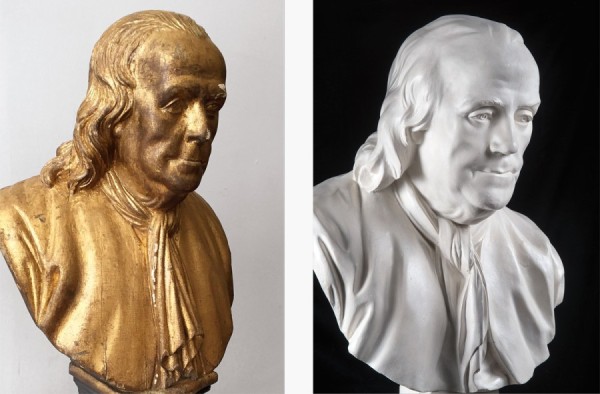
Details of the busts illustrated in figs. 1 and 2.
